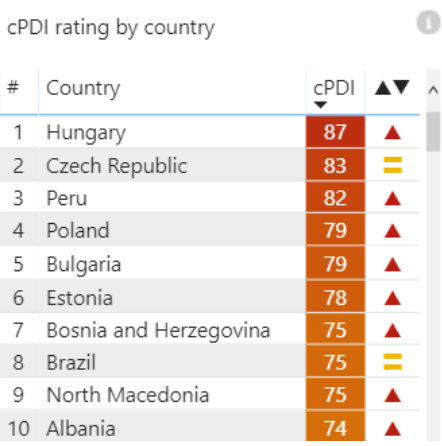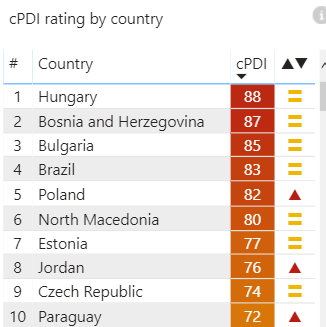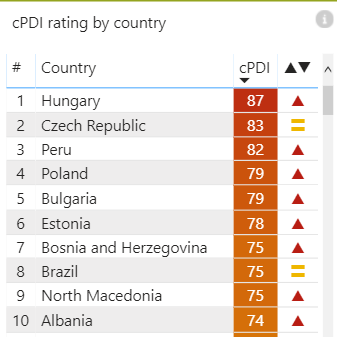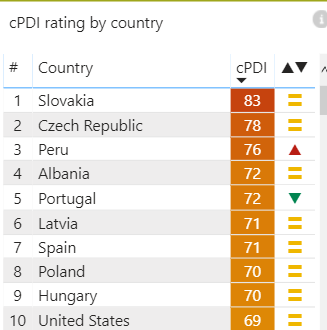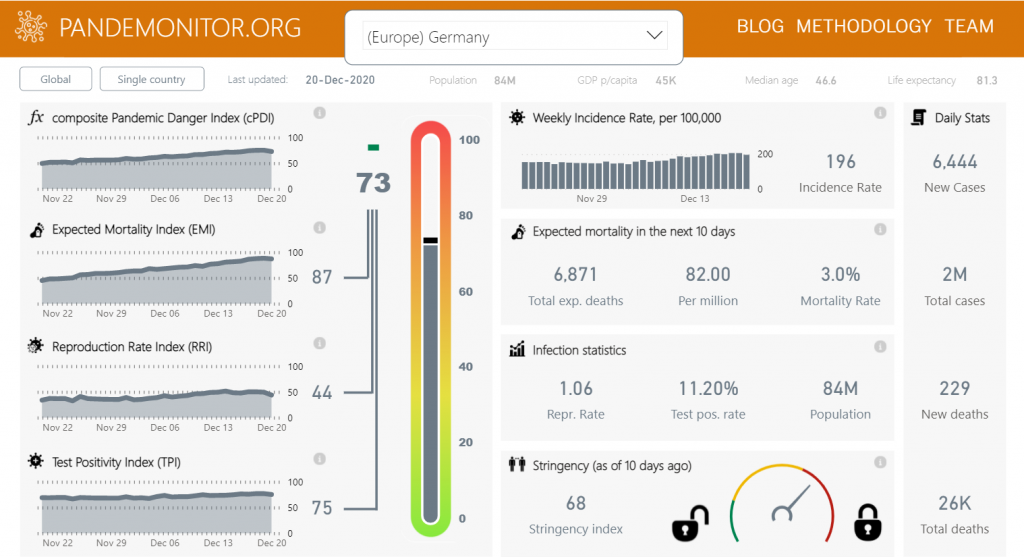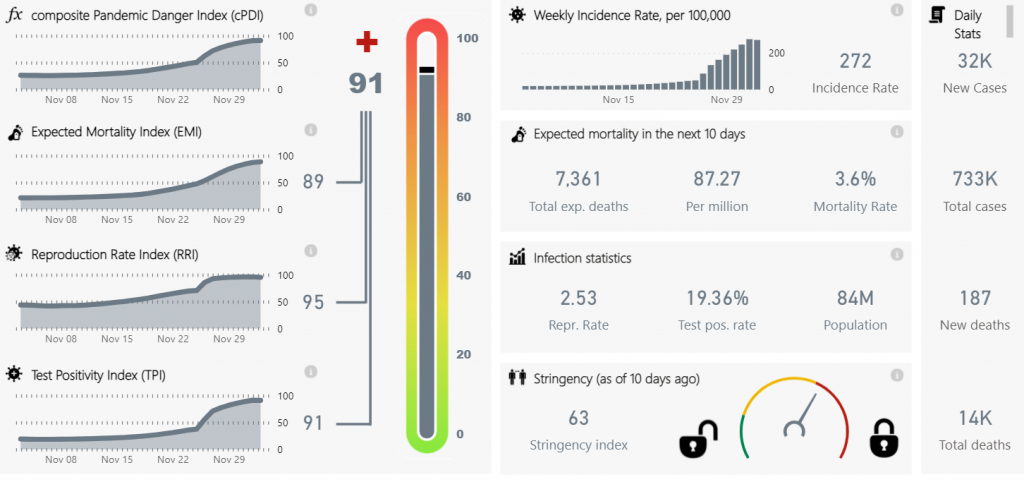So… we’re kicking off the new design (check it out if you haven’t already) with a new regular spot – the Pandemonitor Top Ten, a weekly glance at the ten states with the top (i. e. worse) cPDI scores, meaning the places that we think are most in danger tight now.
And today’s a good day as any to begin, with a change – after a few weeks in which Portugal was way at the top with a surprising post-Christmans outbreak, today’s top cPDI score goes to Slovakia, a state which has been hit hard in the fall/winter wave, but hadn’t really gotten the numbers down far enough before climbing back up. With an incidence rate of almost 250, reproduction rate over 1, 20% test positivity and an expected 15 deaths per million every day in the next ten days, Slovakia doesn’t seem to catch a break.
Slovakia is joined in the top ten by five other Eastern European countries, among them Hungary, Poland, Albania, Latvia and its neighbor, the Czech Republic, at second place. Latvia and Hungary are the most worrying among them as signs seem to show the pandemic gaining up speed there.
Two more European countries – Iberian neighbors Spain and Portugal – fill the 4th and 9th spots, but both seem to have “rounded the corner” and are at better place than they have been a week or two ago. Rounding up the top 10 are perennial corona-hotspot Peru, where high positivity rates and high mortality mean that any small rise in cases means a rise to the top of our scale, and the United States, where expected mortality remains high despite a recent decrease in new cases.
Read more
